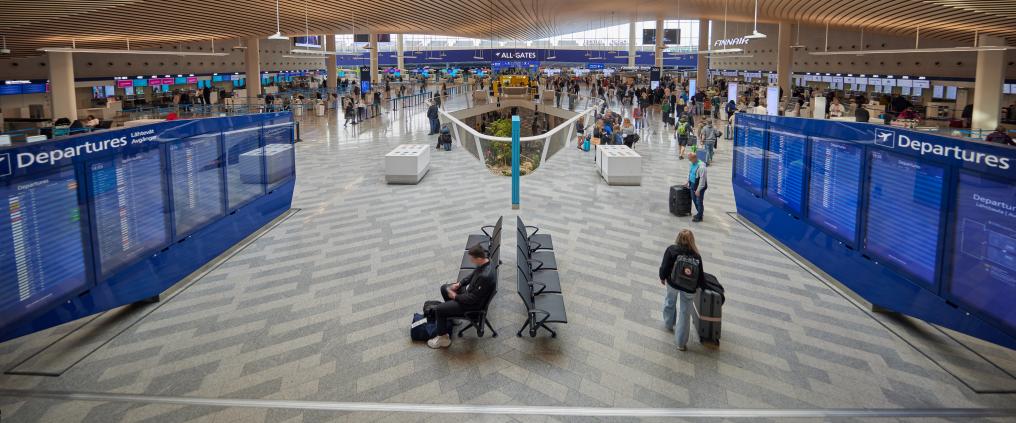Finavia has completed its most extensive development program in the history of Helsinki Airport, which included a €1bn (US$1.05bn) investment over a 10-year period.
As a result of the development program, the terminal’s floor area has increased by 45%, enabling modern airport facilities to be introduced for passengers. The departure and arrival halls were completely renovated, and the airport transitioned into a single-terminal model. Additionally, the security control, shops, restaurants, services, parking and public transportation arrangements were comprehensively updated.
According to Finavia, Helsinki Airport’s selection of shops and restaurants has also improved due to the development program. During the summer and autumn of 2023 alone, nearly 20 new commercial units opened at the airport, increasing the terminal’s retail space to a total of 29,000m2.
The new travel center connects various modes of transportation and provides connections to Helsinki city center as well as other parts of Finland. The travel center links local and long-distance bus services, the Helsinki metropolitan area commuter train service, a taxi station and the airport’s various parking areas. For the planning and implementation of this transportation hub, Finavia received approximately €9.6m (US$10.1m) in EU funding.
The airport aims to showcase Finnish design, not only in terminal architecture and material choices but also in its service offerings. Passengers, businesses operating at the airport and airport personnel were involved in the planning.
Finavia approached the development program with its airline customers in mind. With the expanded terminal level, new aircraft parking spots, passenger boarding bridges and increased baggage handling capacity, airlines can operate more smoothly at Helsinki Airport and service their customers better. Currently, around 50 airlines operate at Helsinki Airport, offering direct flights to 130 destinations worldwide.
Kimmo Mäki, CEO of Finavia, commented, “Helsinki Airport, opened for the 1952 Helsinki Olympics, was constructed piece by piece over decades, with different parts of the terminal representing the design and architecture of different decades. Now, all functions and services have been brought under one roof. This enables a world-class customer experience, keeps distances within the airport short and makes all services easily accessible.
“In addition to the massive construction project, we have also achieved our ambitious customer satisfaction goal for the project. The airport’s operations continued as usual throughout the development program, and at the same time, the passengers’ positive customer experience improved amidst the construction. Customer satisfaction with Helsinki Airport was already at a high level before the start of the development program, and I am very pleased that it has continued to rise.”
In addition to customer experience, the projects included in the development program considered climate and environmental aspects in material choices and energy solutions. The development program had a significant impact on Helsinki Airport becoming carbon neutral in 2017.
“Sustainability is a prerequisite for the future of the entire industry and, through that, for Helsinki Airport’s renovated facilities to serve passengers for decades to come,” Mäki concluded.
To find out more about Helsinki Airport’s latest developments, click here.

